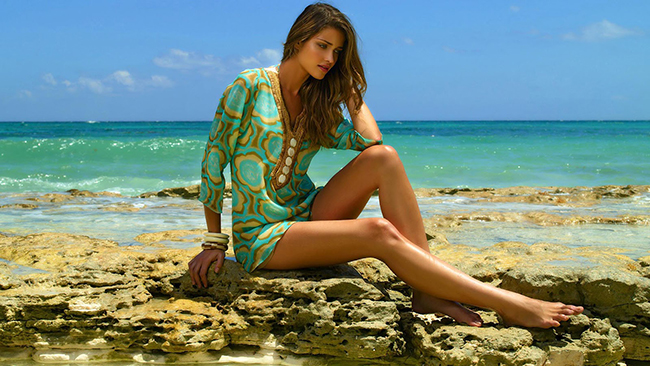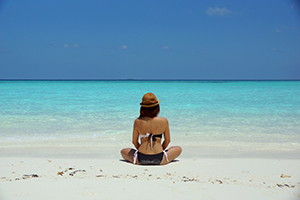Myth or Fact? Six Lessons to Literally Save Your Skin this Summer

By Doris Day, MD
Summer is here and with it comes longer days of sunlight with more time for outdoor activities and weekends at the beach. This also means more exposure to the sun and the potential for sunburns and damage to your skin. We know the effects are cumulative with every exposure building and it is also a fact that enough exposure to ultraviolet radiation (UVR) rays will ultimately lead to premature aging and potentially skin cancer.
Here is your chance to check how skin-savvy you are. Test your knowledge with the six most common questions I get asked concerning summer skin:
1. Myth or Fact: A base tan will protect your skin from sunburn?Myth: The assumption that a tan offers significant protection against sunburn is false. You first have to damage your skin to acquire a tan, which obviously defeats the whole “protective” purpose of tanning. A tan is a biological signal by the skin that DNA damage has occurred.
There is no such thing as a “safe” or “healthy” tan. Since sunburns are also associated with higher risks of skin cancer, especially the deadliest form of skin cancer, melanoma, it’s very important to avoid both suntans and sunburns.
2. Myth or Fact: You can only get a sunburn on a sunny day?Myth: Even on overcast days, 70-80 percent of the ultraviolet rays travel through clouds and they can cause surprisingly bad burns. In fact, I often see the worst cases of sunburn on cloudy days. In addition, sunlight reflects off snow, ice, sand and water, intensifying UVR effects by up to 80 percent. I recommend a sunscreen of Sun Protection Factor ( or ‘SPF’) of 30 or higher every day in addition to being sun smart. This means wearing sun protective clothing, UV blocking sunglasses, a broad rimmed hat and seeking the shade and avoiding midday sun when possible – even on a cloudy day, even if you are not at the beach.
3. Myth or Fact: Only fair-skinned people get skin cancer?Myth: While fair-skinned people are at a higher risk, even those with skin of color are susceptible to skin damage as well as skin cancer. No matter your skin type, you should use a sunscreen with an SPF of 30 or higher and seek the shade between 10:00AM and 4:00PM.
It is also important to check your skin from head-to-toe each month, paying careful attention to any suspicious growths, and make sure you have an annual skin cancer screening with your dermatologist. Keep an eye out for any suspicious growths; some types of melanoma tend to occur on the palms, soles of the feet and mucous membranes, or even the eyes. Show anything new or changing to your dermatologist, they will either reassure you that it’s fine to watch or they will remove it and send it to the lab for further testing. The key for any cancer is early diagnosis and for most skin cancers, even malignant melanoma, early diagnosis can have a 98% or higher cure rate.
4. Myth or Fact: Some clothing is more sun-protective than others?
Fact: The weave of a fabric and even the color has a big impact on how much protection it provides against UV rays. A typical white summer cotton T-shirt offers an Ultraviolet Protection Factor (or ‘UPF’) of 5 to 9, but its UPF decreases to only 3 or 4 when the fabric gets wet, therefore allowing considerable sun penetration. Choosing a fabric with a tighter weave that will allow less UV to come in contact with the skin is of the utmost importance. You can tell if a fabric is woven tightly by using the “hole effect”: hold a particular fabric up to a window or light. The less light you can see, the better the protection.
When selecting fabric colors, be aware that many dyes absorb some UV penetration. Darker colors, as well as some bright colors such as orange and red, have higher UPF ratings. Pale and pastel colors have lower ratings. A piece of pale yellow cotton fabric typically has a UPF of 5 to 9, while the same fabric dyed black has a UPF of 32. Many manufacturers offer special UV-absorbing clothes, from swimsuits and shirts, to hats and pants. This clothing will usually have a high UPF rating, indicating how much UVR it absorbs. These clothes have special weaves and contain UVR - absorbing chemicals such as titanium dioxide. To be considered sun-protective, such clothing must have a UPF higher than 30 and retain its sun-protective qualities after numerous washings and exposure to sunlight.
5. Myth or Fact: UV rays from Tanning beds are more dangerous than those from natural sunlight?Fact: New high-pressure sunlamps emit doses of ultraviolet A (UVA) radiation that can be as much as 12 times that of the sun. In fact, UVA and ultraviolet B (UVB) are proven human carcinogens, according to the U.S. Department of Health and Human Services. Exposure to tanning beds in youth increases melanoma risk by 75 percent and people who use tanning beds are 2.5 times more likely to develop squamous cell carcinoma and 1.5 times more likely to develop basal cell carcinoma. The World Health Organization has recently classified both UVA and UVB as known carcinogens. This means that anyone exposed to these rays for long enough will eventually develop skin cancer.
6. Myth or Fact: You don’t need to wear sunscreen under make-up?Myth: Anything that has an SPF label is sunscreen, but the trick is you have to use enough of it to get the proper effect of the SPF on the label. Most people do not use enough so it is important to use sunscreen under makeup and to reapply sunscreen every few hours if you’re outdoors. Most women don’t have the time or inclination to wash off their makeup to reapply sunscreen so for this reason I recommend an SPF sunscreen in the form of a powder which can go over makeup to give you the protection you need.
Now you are ready to face the summer and keep your skin looking it’s most beautiful best, this summer and for many summers to come. Enjoy the best summer has to offer and remember to go with your own glow, it’s so much more beautiful than a suntan.

Dr. Day, a dermatologist, is affiliated with NYU Langone Hospital.



